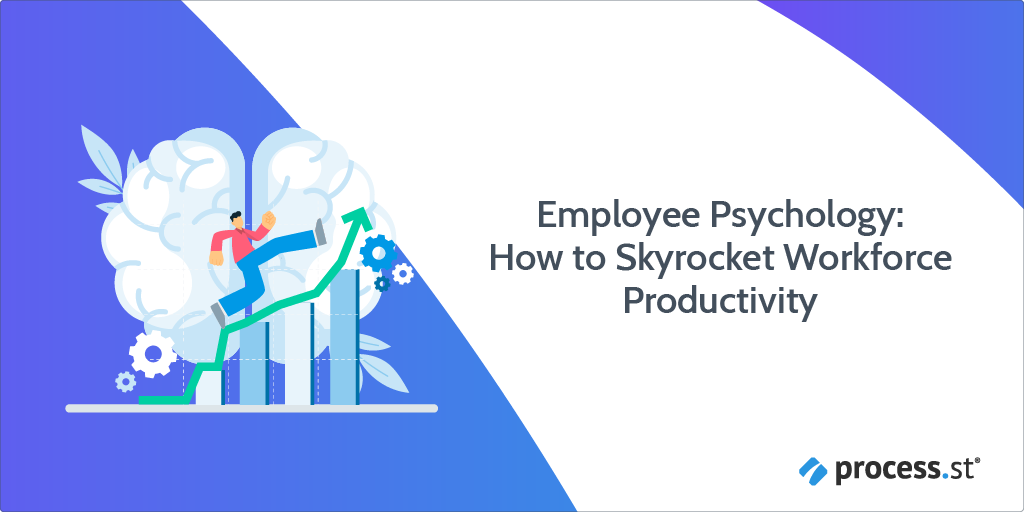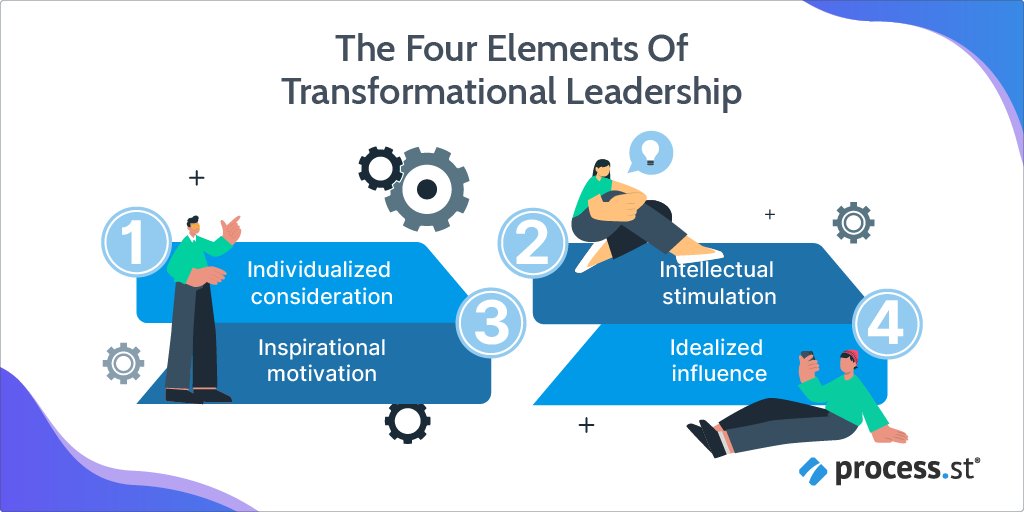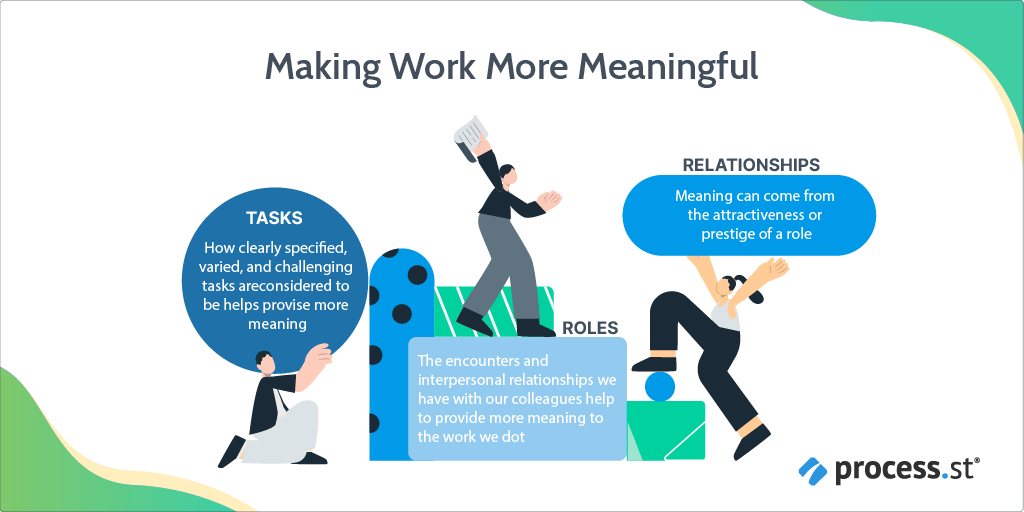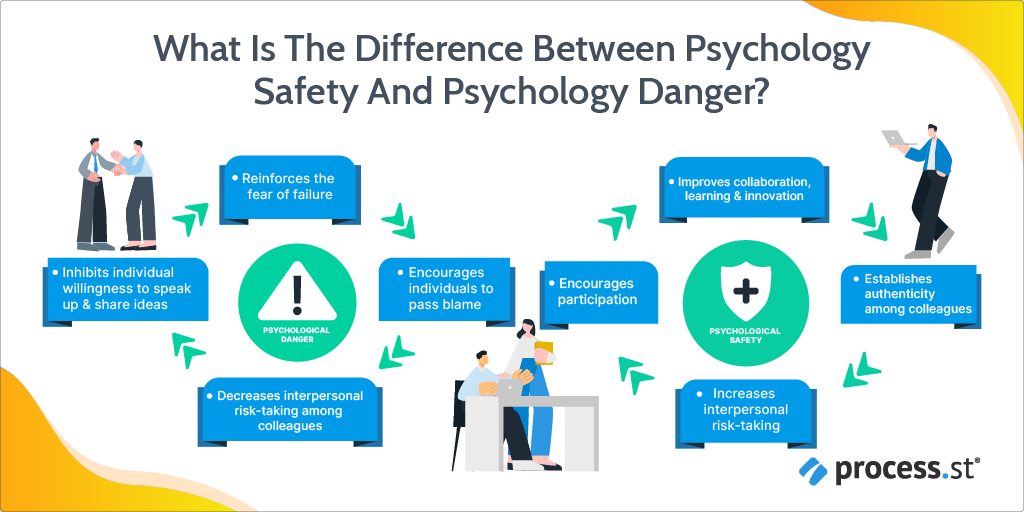
Employee psychology is important.
Why?
Long story short: When employees are engaged, they’re more productive (and so is your organization).
An engaged workforce is the best foundation for a successful company but little attention is given to what drives that engagement. That’s possibly why 85% of employees aren’t engaged in the workplace.
A greater understanding of employee psychology will help you hack employee behavior and get your workforce more engaged.
- What is employee psychology?
- Self-Determination Theory: Why employee autonomy improves motivation
- How fostering developmental relationships impacts engagement
- Why employees need meaningful work
- Why is psychological safety important in the workplace?
- Letting employees do what they do best
What is employee psychology?
Employee psychology is focused on why an employee behaves the way they do while performing their role.
This practice categorizes employee behaviors into predictable patterns. By studying those patterns, managers can effectively deal with both individual employees and entire teams.
Understanding employee psychology is incredibly beneficial to companies as it provides insight into an organization’s greatest asset (their employees). This empowers managers to effectively deal with different employee personality types.
Employee behaviors have been classified and put into predictable patterns understood as employee psychology. In better understanding employee psychology, managers can identify the most effective way to deal with both individual employees and teams of workers.
Self-Determination Theory: Why employee autonomy improves motivation
Deci and Ryan’s Self-Determination Theory recognizes the importance of autonomy in employee psychology.
Deci and Ryan found that our overall motivation levels decrease when we believe our actions are directly linked to an external source. This is because we feel we’re being controlled.
From this understanding, Self-Determination Theory claims that we will eventually begin to lose interest in what we’re doing if we don’t have a sense of freedom in how or why we’re doing it.
This is opposed to intrinsic motivation, which is “the desire to complete a task that comes from an inherent curiosity and interest in the specific activity itself.”
How can you improve employee autonomy in the workplace?
The best way to make sense of autonomy is to think about it in terms of:
- How your employees conduct work
- When your employees conduct work
- Where your employees conduct work
How autonomy influences how we work
You can’t keep your employees engaged with just a top-down approach. As Locke outlines in his Goal-Setting Theory, employees need to be included in defining their own targets.
A good way to include this psychological theory is to work in sprints. It’s up to you and your team to decide what time periods you want to be working with. For example, weekly, bi-weekly, monthly, quarterly sprints, etc.
During these sprints, you can empower your team members to outline the goals they believe they can complete to help achieve team targets.
Setting goals that align with the overall business or wider team objectives provides a greater sense of purpose to employees.
How autonomy influences when we work
Letting employees choose their own hours is scary. However, trust is a necessary part of building better employee engagement.
Research has found a clear link between employees’ perceived level of flexibility and work-life policies. When these two elements are implemented well, there’s longer expected retention and higher engagement.
Offering flexible hours allows employees to work when they’re most productive. It also shows that you appreciate their efforts and respect their commitments outside work.
How autonomy influences where we work
We’re big fans of remote working here at Process Street – and we take great pride in being fully remote before it was trendy
Being able to decide where you work also forms part of supporting employee autonomy. Some of the benefits include:
- Reducing stress from commuting
- Providing a better work-life balance
- Promoting productivity because employees can work where they’re most comfortable
Adopting remote work policies into your company culture offers this autonomy. It also helps attract and retain top talent. A Gallup study has shown that remote work opportunities play a distinctive role in an employee’s decision to join or leave a company.
How fostering developmental relationships impacts engagement
The outdated concept of “management” has been replaced by a more holistic demand for leaders who possess the soft skills necessary to empower and enable their teams.
Leaving the carrot/stick method behind shows employees that you’re invested in their growth and development. The more valued an employee feels by leadership, the more loyalty and emotional investment they give in return.
Moving from a transactional to transformational leadership
In 1978, Pultizer Prize-winning historian James MacGregor Burns outlined two distinct approaches to management.
Transactional leadership is centered around performance, organization, and supervision. Focus is placed on specific tasks while motivation is driven by reward or punishment.
Transformational leadership involves the practice of mutual motivation: Both leaders and their followers raise each other to higher levels of motivation through cooperation.
4 actionable steps to achieve transformational leadership

- Intellectual stimulation
Intellectual stimulation is all about encouraging people to think independently and figure out better ways of completing tasks.
- Individualized consideration
Do you know what your individual team members need?
Listening to your employees’ needs, and then coaching them towards your desired outcome is more effective than issuing commands.
This approach requires ongoing communication and support, but it also fulfills an individual’s need for self-development and boosts intrinsic motivation.
- Idealized influence
Employees need to trust you. That means you have to live by what you preach.
“Do as I say, not as I do” just won’t cut it in today’s working environment. You don’t need to be perfect, but there needs to be a level of consistency between what you say and do. In essence, idealized influence is all about being a positive role model.
- Inspirational motivation
Part of being a good leader is getting people invested in your vision. Strong communication skills are key.
If people buy into your vision, they are more likely to stay motivated and believe in their abilities.
Management support is about showing people you care
Supportive managers should actively mentor their team members.
In 1985, Kathy Kram, now Professor Emeritus of Organizational Behavior at Questrom School of Business, proposed the concept of “developmental relationships,” an approach to mentorship based on mutual support.
Instead of the traditional mentor/mentee dynamic, Kram advocates a two-way exchange. These relationships should be built on effective coaching and counseling, which ultimately results in a more robust level of management support.
Traditional mentors are often much more useful for people in the early stages of their careers, whereas developmental relationships can last the duration. Kram’s study showed that in some cases, developmental relationships lasted almost 30 years!
Handing down instructions and expecting people to do exactly what you say might be one way to manage people, but it’s not the same as management support.
Modern forms of management, like People Operations, are all about using empathy and emotional intelligence to build better relationships with your employees. When done right, people are more willing to invest in their work, which results in better overall:
- Motivation
- Engagement
- Performance
Why employees need meaningful work
In the world of organizational psychology, the concept of meaningfulness encompasses two things:
- The connection we feel toward a task’s purpose
- The extent that we feel our work is valued/valuable
Psychological meaningfulness
Psychological meaningfulness occurs when we feel we’re contributing to something bigger than ourselves
According to William Kahn’s Theory of Employee Engagement, there are three ingredients required for meaningful work:
- Tasks: How challenging, varied, and clearly specified tasks are considered to be
- Roles: The prestige or attractiveness of the role
- Relationships: The interpersonal relationships and encounters we have with our co-workers
By completing tasks that align with both our skills and values, we are made to feel that we have the opportunity to do what we do best every day. This reinforces our sense of competence and increases engagement.

How to improve psychological meaningfulness for your employees
The first step is to look at the tasks themselves. It’s essential to have a two-way conversation with people in your team to provide the right level of challenge and enjoyment.
You won’t be able to completely accommodate everyone every time, but you can create a balance between the positive and negative.
Job sharing and agile teams are examples of things you can do to give employees more freedom to work on projects and areas they enjoy most.
Next, connect those tasks with the bigger picture.
Take the case when John F. Kennedy visited NASA and asked a janitor what his job was. The man’s response was, “I’m helping send a man to the moon.”
He understood that even seemingly minor tasks played a vital role in the overall effectiveness of the entire organization.
Why is psychological safety important in the workplace?
You have an exciting idea for a project. What do you do now?
Here are your two options:
- Share your idea with your team to bring it to life.
- Keep it to yourself due to fear of rejection.
The choice you ultimately make depends on how comfortable you feel expressing yourself within the team. This is known as psychological safety and it comes down to the confidence employees have in their existing work culture to:
- Ask for help
- Admit when they don’t know something
- Take risks
All of this is done without being afraid of facing negative repercussions.
From studying high-performing teams for two years, Google found that psychological safety made up one of the five vital elements needed to make a successful team.
William Kahn first made the link between psychological safety and engagement in his 1990 paper Psychological Conditions for Personal Engagement and Disengagement at Work.
Kahn defined engagement as a worker’s ability to harness their “complete self” at work. In his research, he identified the three psychological conditions needed for engagement: Meaningfulness, availability, and safety.
Without these three elements, he believed employees will never be able to become engaged and reach their full potential.
William Kahn’s “The Ostrich Effect”
Kahn’s “Ostrich Effect” highlighted what possible outcomes might occur when there’s a lack of psychological safety in the workplace.
While studying work conditions across US-based offices, he found a real-world example of this:
“There were the engineers and product designers who barely spoke to one another but could not say why. I found the answer: a misunderstanding between their respective Vice Presidents had mushroomed into divisional conflict.”
William Kahn, The Ostrich Effect: Solving Destructive Patterns at Work.
Social factors can reinforce these negative engagement outcomes (and impact psychological safety). These social factors specifically noted by Kahn are:
- The disconnect between managers and teams
- Failures in communication lines
- Imbalances in power

How to create a sense of psychological safety in the workplace
You have many options to help offer a safe environment for employees to express themselves and their opinions.
- Encourage insightful debate within the team
Team leaders can moderate discussions within their teams that encourage employees to voice their opinions.
It’s important for managers to monitor these discussions to make sure they aren’t dominated by some at the expense of others.
- Embrace collaboration and avoid conflict
You can’t completely avoid conflicts in the workplace. But you can control the way you react to it.
Avoid creating a fight-or-flight atmosphere by diffusing the situation. By addressing the situation through respectful discussion, the conflict becomes a collaboration that can result in a win for all parties.
- Make receiving feedback from employees easy
Some employees are more introverted than others. And having these introverts in your team is great for diversity (among other things).
To get the most out of these employees, it’s best to provide your team with various communication channels to raise any concerns they might have without putting them in the spotlight.
Confidential surveys and feedback boxes are excellent ways to get employees to voice their opinions in a way that’s comfortable for them to do so.
Letting employees do what they do best
“Without a sense of freedom in how (or why) we approach a task, we will eventually begin to lose interest.”
Deci and Ryan’s Self-Determination Theory.
This is the essence of employee motivation and engagement. Providing a supportive culture that gives employees freedom over their work will drive engagement.
But with freedom comes responsibility. That means your employees take greater responsibility for the work they’re turning over – and they see how important their effort is to help achieve the overall business goals.
Just like that, your employee engagement is pushed to the max.
What do you believe is the best way to make your employees feel supported and valued? Let us know in the comments.







Grace Donaldson
Grace is a content writer with a thirst for knowledge and coffee. You'll find her reading in a small café or singing at a rundown jazz bar when she's not overconsuming coffee or compartmentalizing her thoughts into a blog post.